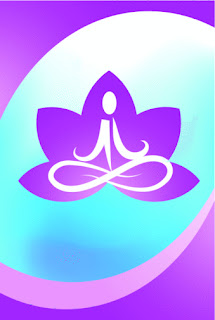Dependency on external stimuli and
substances can lead even the most avid Yoga practitioner to a state of
despondency when the distracting substance or stimuli is not available. Of
course, many practitioners are familiar with the negative consequences of being
addicted to mood altering drugs. However, many Yoga teachers and students may
not be aware of the depth and pervasiveness of their own psychological
dependency on subtle mental thinking patterns and external sensory stimulation.
Patanjali, who wrote one of the most
well-known texts on the practice of Yoga in the second century known as the
Yoga Sutras, espouses the benefit of the withdrawal of the senses from all
external stimulation. When the thought waves of the mind quiet and the senses
come to rest in the clear light of bliss within the cave of the heart, it is
far easier to know God. In terms of a Yoga practice, becoming proficient at the
withdrawal of the senses or pratyahara, is one of the primary steps toward
mystical absorption in God or Samadhi. This state of oneness with the Divine is
ultimately the goal of all Yoga practices.
On a less lofty note, incorporating
pratyahara into your practice will help you to create a sense of mental and
emotional independence from external substances, sources of stimulation, and
even other people. This sense of internal freedom and independence will help
you to choose nurturing activities, healthy food and even the company you keep.
There are many ways to incorporate the practice of the withdrawal of the senses
into your personal Yoga session or class.
One of the primary ways of practicing
pratyahara during a Yoga class is by focusing on your breath while you flow
through the physical postures. Ujjayi Pranayama, or the Ocean Sounding Breath,
is a very effective way of grounding your attention on your breath and focusing
your attention on the practice of the postures. One Yoga teacher referred to
the practice of Ujjayi Pranayama during a series of Ashtanga Yoga poses as a
string of pearls upon which to thread the mind.
Another very accessible way of
centering your attention on your Yoga practice and pulling your thoughts away
from internal distractions and external stimulation, is by practicing
restorative postures with bolsters and eye bags. A few examples of some poses
that easily and organically facilitate the practice of pratyahara are
Restorative Legs Up the Wall Pose and Supported Seated Forward Fold. These
postures are also quite relaxing and rejuvenating.
* Restorative Legs Up the Wall Pose
Restorative Legs Up the Wall Pose is
usually practiced towards the end of a Yoga class. It is a gentle, but powerful
inversion that is accessible to most students. To practice Restorative Legs Up
the Wall Pose, find a free wall space in the your home or studio. Place your
mat perpendicular to the wall. For a deep sense of comfort, you may wish to use
a bolster, blanket and an aromatherapy eye pillow. If you are using these Yoga
props, place them near your mat.
When you are ready to practice
Restorative Legs Up the Wall Pose, gently lie on your mat with your right
buttock touching the wall. Swing your legs up and rest them against the wall
with your ankles touching. If you are using a Yoga Bolster, place it underneath
your hips at this time. If you are using a blanket and an eye pillow, place the
blanket over your torso and the aromatherapy eye pillow on your eyes.
Rest in Restorative Legs Up the Wall Pose for five to ten minutes.
If you mind wanders, gently guide your internal gaze back
to your Ajna Chakra, which is located at the point between your eyebrows. Rest
your mind in the spaciousness of your own internal being. When you have
completed your practice of the posture, remove any props that you are using and
place them to the side of your mat. With an exhale, swing your legs down and
rest on your right side for several breaths. When you are ready, come back to a
comfortable seated position on your Yoga mat and feel the rejuvenating effects
of Restorative Legs Up the Wall Pose.
© Copyright – Aura Wellness Center – Publications Division
Do you want to know how to become a Yoga instructor?




1 comment:
A very effective way of doing Viparita karni. Many thanks for sharing this information.
Post a Comment